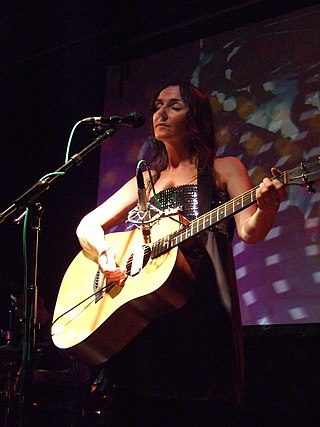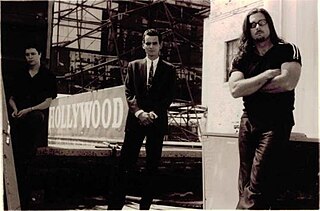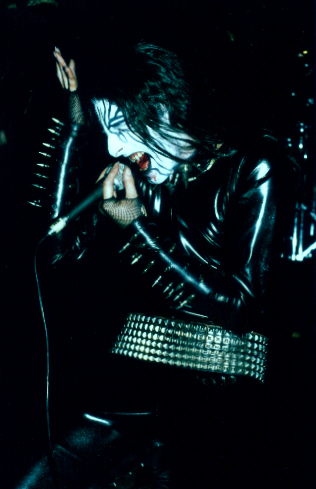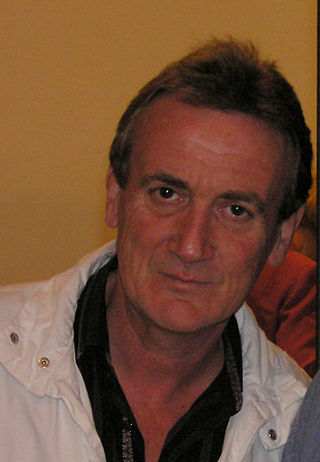Related Research Articles

Mouse on Mars is a German electronic music duo formed in 1993 by Jan St. Werner and Andi Toma. Their music is a blend of electronic genres including IDM, dub, krautrock, breakbeat and ambient, featuring heavy use of organic analog synth and cross-frequency modulation. Their music also features live instrumentation including strings, horns, drums, bass, and guitar.

Steve J. Morse is an American guitarist, best known as the founder of the Dixie Dregs and as the guitarist for Deep Purple from 1994 to 2022. Morse has also enjoyed a successful solo career and was briefly a member of the group Kansas in the mid-1980s. Most recently, Morse became a member of the supergroup Flying Colors.
Labradford is a U.S. post-rock musical group from Richmond, Virginia, founded in 1992. They have released six full albums from 1993 to 2001. Though not disbanded, its members have since been active with separate projects.

Cranes are a British rock band formed in 1985.

Spahn Ranch was an American electro-industrial group from Los Angeles. Active from 1992 to 2000, the band played a subgenre of industrial music with its fusion of electronic dance, industrial and gothic music.

Cenobita is an aggrotech/cyberpunk band based in Mexico City, created in 1994 by Claus Bita and former band member Omar Flo (vocals).

Mentallo and the Fixer is the project name used by Texan electro-industrial musicians Gary Dassing (Mentallo) and Dwayne Dassing from 1988 to 1999, and by Gary Dassing alone from 1999 to the present day. The band has several releases on the American record label, Metropolis Records. They are named after two Marvel Comics characters.

Armageddon Dildos is a German electro-industrial-duo originally consisting of Uwe Kanka (vocals) and Dirk Krause (synthesizer). The act was formed in 1988 in Kassel Germany, and the name comes from the slang term for intercontinental ballistic missiles. They perform songs in both German and English.

The Goa Mix is a two-hour DJ mix by British musician and DJ Paul Oakenfold. It was originally broadcast on BBC Radio 1 as an Essential Mix on 18 December 1994 after the producer of the show, Eddie Gordon, chose Oakenfold to produce an eclectic DJ mix for the show which featured a burgeoning variation of electronic styles, having begun the previous year. Oakenfold had, at this point, developed his own unique Goa trance sound, influenced by his time at hippy gatherings on beaches in Goa, and employed it heavily into the mix, which also made pioneering use of film score samples. Oakenfold used the mix as an experiment in which he tried to fuse electronic music, especially trance music, with film score music, and then to overlay the result with vocal parts, samples and additional production. The mix was split into two parts, later referred to as the Silver Mix and the Gold Mix respectively. Reflecting the Goa influence, the album title did not evolve beyond its simplistic working name.
Trance Mission is a world fusion ensemble co-founded in San Francisco by American clarinetist and composer Beth Custer and British-born didgeridoo player Stephen Kent in 1992, with Canadian musician Kenneth Newby and American percussionist John Loose. Their music incorporates elements of jazz, fourth world and ethnoambient music styles. In the 1990s, the group recorded four albums on the ambient label City of Tribes.

Valério Costa, known by his stage names, Kaiaphas and Lord Kaiaphas, is a black metal vocalist, drummer, lyricist and songwriter. He is mostly known for his works while in the Norwegian black metal band Ancient. His current projects are Thokkian Vortex and Minimal Criminal. His name is taken after Caiaphas, the high priest during the Sanhedrin trial of Jesus.
Diatribe was an American industrial rock group from San Jose, California, active since 1989. They had a sound similar to 16 Volt and Chemlab, integrating synthesizers and vocal samples with more traditional rock instruments. The band's full-length debut Diatribe was released by Cargo Music and Re-Constriction Records on November 3, 1996.
Digital Poodle was an electro-industrial/EBM band, based in Toronto, Ontario, Canada. It was formed in 1986 and remained active until about 1995.

Nic Potter was a British bassist, composer and painter, best known for his work with the group Van der Graaf Generator in the 1970s.

Society Burning is an American coldwave industrial rock band composed of Daveoramma, Twitch, and Boom chr Paige. The group was founded in Las Cruces, New Mexico, in 1991 and was originally named The Watchmen.

MFS is an independent electronic dance music label from Berlin, Germany. Founded by Mark Reeder in 1990, it initially ran until 2008, when Reeder put the label on ice to concentrate on his own music production and remixer career. Reeder reactivated the label in 2018, specifically to release the album Fragment by Chinese band STOLEN.

Strange Nature was an indie rock band from the United Kingdom signed to Pete Waterman's PWL record label in the UK, Warner Music in Europe, and Warner Chappell Music for worldwide publishing. The band was popular in Europe during 1992 to 1995. Strange Nature recorded one album, World Song, and two singles, "Incantation Man" and "New Messiah". Winning "Best Album" from the Sunday Mirror and receiving airplay from all major European radio stations and MTV, all three releases charted in Europe.
Electronicore is a fusion genre of metalcore with elements of various electronic music genres, often including trance, electronica, and dubstep.
Throughout their career, The Cranberries recorded several radio and television sessions in the form of recording studio sessions, live studio sessions, and live audience sessions.
Trance to the Sun (1990–present) is a neo-psychedelic post-punk band originally based out of Santa Barbara, California. The band consists of multi-instrumentalist Ashkelon Sain as the primary songwriter, performer and producer, and has featured three full-time vocalists—Ingrid Blue (1997–present), Dawn Michelle Wagner (1997), and Zoë Alexandra Wakefield (1993–1996). Trance to the Sun recordings have often included guest contributors, and tour line-ups have usually included one or more additional musicians. Currently, the band consists of Ashkelon Sain, Ingrid Luna, and Daniel Henderson, with additional live musician Terry Luna on bass guitar.
References
- 1 2 3 Gibson, Robin; Champion, Sarah (10 October 2007). "Rob Deacon (obituary)". The Guardian. London.
- 1 2 "Chapter and verse for music lovers". The Independent on Sunday. 13 October 1996.
- 1 2 As stated on the inside front cover of Volume Five in December 1992.
- ↑ Sandall, Robert (27 December 1992). "Slip me a disc". The Sunday Times (Culture section). p. 4.
- ↑ "Records". The Independent on Sunday (Sunday Review section). 3 October 1993. p. 22.
- ↑ Sinclair, David (23 December 1994). "Read it hear first - New Albums". The Times. p. 27.